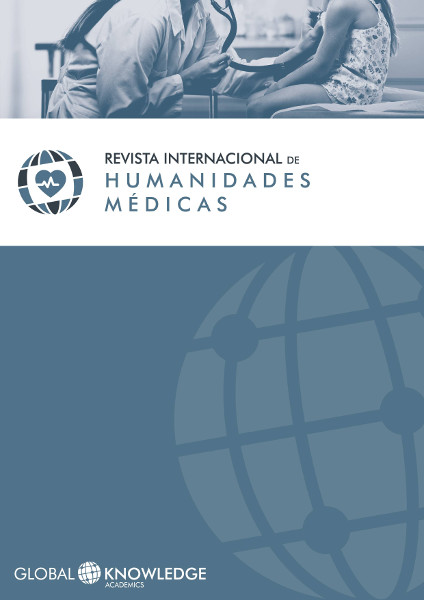Energy expenditure of the whole body electromyostimulation: A comparison which other physics activities, methods and training devices
DOI:
https://doi.org/10.37467/gka-revmedica.v5.168Keywords:
Energy Expenditure, Whole Body Electromyostimulation, Physical ActivitiesAbstract
Personal trainings with integrated electro-stimulation devices or Whole Body Electromyostimulation (WB-EMS) have multiplied in Spain and Central Europe. WB-EMS centers pose benefits for the training with this device, as a high-energy expenditure compared to other physical activities. In some cases one gets to match 20 minutes from WB-EMS with 3 hours of intense exercise. A literature review was conducted to compare the energy costs generated by a session of WB-EMS and other activities, methods or training devices. The results show that, at similar intensity, a session of WB-EMS as described in the study, not presents be superior to other activities. This publicity can change the type or frequency of activities of some users, who, motivated by the advertised benefit, could leave or reduce them, with the consequent risk of not to accumulate the minimum of physical activity recommended by the American College of Sports Medicine or the World Health Organization.
Global Statistics ℹ️
|
114
Views
|
78
Downloads
|
|
192
Total
|
|
References
Ainsworth, B. E., Haskell, W. L., Herrmann, S. D., Meckes, N., Bassett, D. R., Tudor-Locke, C., Greer, J. L., Vezina, J., Whitt-Glover, M. C. y Leon, A. S. (2011). Compendium of Physical Activities: a second update of codes and MET values. Medicine and Science in Sports and Exercise, 43 (8), 1575-1581.
Almuzaini, K. S., Potteiger, J. A. y Green, S. B. (1998). Effects of split exercise sessions on excess postexercise oxygen consump-tion and resting metabolic rate. Canadian Society for Exercise Phy-siology, 23 (5), 433-43.
American College of Sports Medicine. ACSM. (2007). Manual ACSM para la valoración y prescripción del ejercicio . Barcelona, España: Editorial Paidotribo.
Benito, E. M. y Martínez, E. J. (2013). Electroestimulación neuromuscular en el deporte . Sevilla, España: Wanceulen.
Benito. P. J. (2014). Gasto energético. En P. J. Benito, S. C. Calvo, C. Gómez y C. Iglesias (Eds.). Alimentación y nutrición en la vida activa: ejercicio físico y deporte (pp. 323-348). Madrid, España: Editorial Uned.
Billat, V. (2002). Fisiología y metodología del entrenamiento. De la teoría a la práctica. Barcelona, España: Editorial Paidotribo.
Borsheim, E. y Bahr, R. (2003). Effect of exercise intensi-ty, duration and mode on post-exercise oxygen consumption. Sports medicine, 33 (14), 1037-60.
Brown, G. A., Cook, C. M., Krueger, R. D. y Heelan, K. A. (2010). Comparison of energy expenditure on a treadmill vs. an elliptical device at a self-selected exercise intensity. The Journal of Strength & Conditioning Research, 24 (6), 1643-1649.
Buceta, J. M. (1998). Psicología del entrenamiento deportivo . Madrid, España: Editorial Dykinson.
Caria, M. A., Tangianu, F., Congu, A., Crisafulli, A. y Mamelli, O. (2007). Quantification of Spinning® bike performance during a standard 50-minute class. Journal of Sports Sciences, 25 (4), 421-429.
Church, T. S., Earnest, C. P. y Morss, G. M. (2002). Field testing of physiological responses associated with Nordic Walking. Research quarterly for exercise and sport, 73 (3), 296-300.
Cometti, G. (2014). Los métodos modernos de musculación . Barcelona, España. Editorial Paidotribo.
Da Silva, M. E., Fernandez, J. M., Castillo, E., Nuñez, V. M., Vaamonde, D. M., Poblador, M. S. y Lancho, J. L. (2007). Influence of vibration training on energy expenditure in active men. Journal of Strength and Conditioning Research, 21 (2), 470-475.
Donnelly, J. E., Blair, S. N., Jakicic, J. M., Manore, M. M., Rankin, J. W. y Smith, B. K. (2009). American College of Sports Medicine Position Stand. Appropriate physical activity intervention strategies for weight loss and prevention of weight regain for adults. Medicine and science in sports and exercise, 41 (2), 459-471.
FDA. (2015). Import Alert 89-01 . U. S. Food & Drug Administration. Recuperado de http://www.accessdata.fda.gov/cms_ia/importalert_240.html .
FDA. (2015). CPG Sec. 355.200 . U. S. Food & Drug Administration. Recuperado de http://www.fda.gov/iceci/compliancemanuals/compliancepolicyguidancemanual/ucm073906.htm .
Fernández, M. D., Sainz, A. G. y Garzón, M. C. (2007). Entrenamiento físico-deportivo y alimentación. Barcelona, España: Editorial Paidotribo.
Gil, A. (2010). Tratado de nutrición: Nutrición clínica . Madrid, España: Editorial Médica Panamericana.
Greer, B. K., Sirithienthad, P., Moffatt, R. J., Marcello, R. T. y Panton, L. B. (2015). EPOC Comparison Between Isocaloric Bouts of Steady-State Aerobic, Intermittent Aerobic, and Resistance Training. Research quarterly for exercise and sport, 86 (2), 190-195.
Kent, M. (2003). Diccionario Oxford de medicina y ciencias del deporte . Barcelona, España: Editorial Paidotribo.
Kemmler, W., Schliffka, R., Mayhew, J. L y Von Stengel, S. (2010). Effects of whole-body electromyostimulation on resting metabolic rate, body composition, and maximum strength in postmenopausal women: the training and electrostimulation trial. Journal of Strenght and Conditioning Research, 24 (7), 1880-1887.
Kemmler, W. y Von Stengel, S. (2012). Alternative exercise technologies to fight against sarcopenia at old age: a series of studies and review. Journal of Aging Research (2012). doi.org/10.1155/2012/109013.
Kemmler, W., Von Stengel, S., Schawarz, J. y Mayhew, J. L. (2012). Effect of whole-body electromyostimulation on energy expenditure during exercise. Journal of Strenght and Conditioning Research, 26 (1), 240-245.
Kemmler, W. y Von Stengel, S. (2013). Whole-body electromyostimulation as a means to impact muscle mass and abdominal body fat in lean, sedentary, older female adults: subanalysis of the TEST-III trial. Clinical Intervention in Age , (8), 1353-1364.
Kemmler, W., Bebenek, M., Engelke, K. y Von Stengel, S. (2014). Impact of whole-body electromyostimulation on body composition in elderly women at risk for sarcopenia: the training and electrostimulation trial (TEST-III). American Aging Association , (36), 395-406.
Kliszczewicz, B., Snarr, R. L., y Esco, M. R. (2014). Metabolic and cardiovascular response to the CrossFit workout ‘Cindy’. Journal of Sport and Human Performance, 2 (2).
Laforgia, J., Withers, R. T. y Gore, C. J. (2006). Effects of exercise intensity and duration on the excess post-exercise oxygen consumption. Journal of sports sciences, 24 (12), 1247-1264.
Luettgen, M., Foster, C., Doberstein, S. Mikat, R. y Porcari, J. (2012). Zumba®: Is the “fitnessparty” a good workout? Journal of Sports Science and Medicine , (11), 357-358.
Mermier, C. M., Robergs, R. A., McMinn, S. M. y Heyward, V. H. (1997). Energy expenditure and physiological responses during indoor rock climbing. British Journal of Sports Medicine, (31), 224-228.
Mora, R. (2009). Fisiología del deporte y el ejercicio. Prácticas de campo y laboratorio. Madrid, España: Editorial Médica Panamericana.
Moyna, N. M., Robertson, R. J., Meckes, C. L., Peoples, J. A., Millich, N.B. y Thompson, P. D. (2001). Intermodal comparison of energy expenditure at exercise intensities corresponding to the perceptual preference range. Medicine and Science in Sports and Exercise, 33 (8), 1404-1410.
Porcari, J. (2013). Exercise intensity and energy expenditure of a tabata workout. Journal of Sport Science and Medicine , (12), 612-613.
Schuenke, M. D., Mikat, R. P. y McBride, J. M. (2002). Effect of an acute period of resistance exercise on excess post-exercise oxygen consumption: Implications for body mass management. Journal of Applied Physiology, 86 (5), 411-7.
Serra, R., Bagur, C. (2004). Prescripción de ejercicio físico para la salud . Barcelona, España: Editorial Paidotribo.
Von Stengel, S., Bebenek, M., Engelke, K. y Kemmler, W. (2015). Whole-body electromyostimulation to fight osteopenia in elderly females: the randomized controlled training and electrostimulation trial (TEST-III). Journal of Osteoporosis (2015). doi.org/10.1155/2015/643520.
Weineck, J. (2005). Entrenamiento total . Barcelona, España: Editorial Paidotribo.
Wilmore J. H. y Costill, D. L. (2007). Fisiología del esfuerzo y del deporte. Barcelona, España: Editorial Paidotribo.
World Health Organization. WHO. (2010). Recomendaciones mundiales sobre actividad física para la salud . Génova, Italia: WHO Library Cataloguing inPublication Data.
Downloads
Published
How to Cite
Issue
Section
License
Those authors who publish in this journal accept the following terms:
- Authors will keep the moral right of the work and they will transfer the commercial rights.
- After 1 year from publication, the work shall thereafter be open access online on our website, but will retain copyright.
- In the event that the authors wish to assign an Creative Commons (CC) license, they may request it by writing to administracion@edulab.es









